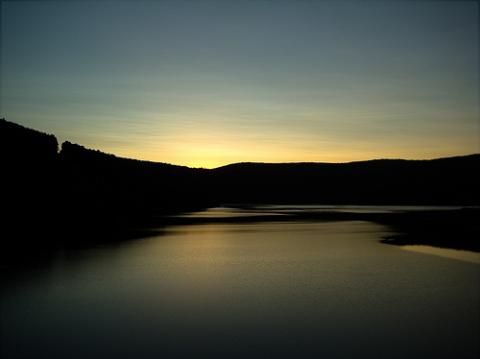
Sunset at the Ashokan Reservoir. Photo taken by Flickr user llahbocaj, published under Creative Commons license.
The Daily Freeman is reporting today that the New York State Department of Environmental Conservation (NYSDEC) has no time frame for ending what officials admit to be harmful muddy water releases from the Ashokan Reservoir into the Esopus Creek.
Releasing water from the reservoir into the Esopus has been the source of continuing controversy, pitting environmentalists against lawmakers, NYSDEC and the New York City Department of Environmental Protection, which controls the reservoir. The issue here is turbidity, a particularly hairy subject since a hyperactive late summer storm season battered the region, causing the DEP to activate release channels.
A permit issued last month to the city Department of Environmental Protection, [which] operates the reservoir, allows up to 1 billion gallons of turbid water to be released from the reservoir per day, followed by a three-day flush “of the least turbid water.” The permit doesn’t specify where the clean water would come from.
Critics say the releases allow the city to pollute the lower Esopus Creek and make the risk of flooding along the creek worse by leaving a buildup of sediment and eroding stream banks.
The city agency contends the releases actually will reduce the flood risk by creating a void in the reservoir’s West Basin to capture runoff from heavy rains. The agency has stood by its argument that removing sediment from the reservoir is necessary because the state no longer allows the use of chemical settling agents in the Kensico Reservoir in Westchester County, where water from the Ashokan is sent before heading to the city.
[...]
Ulster County Executive Michael Hein said on Tuesday that he plans to talk with the so-called “working group” of stakeholders who have met with city and state officials in an effort to reach an agreement that would address flood concerns, reduce turbidity, and determine the extent of damage from five months of turbid releases, from October 2010 to February 2011.
The debate continues...















